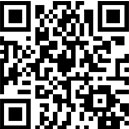
The five most common cable mistakes
Using the wiring diagram test function, you can know whether the continuity and each wire in the four-wire pair cable is correctly connected to the corresponding pin at the far end, including five specific tests -- open, short, reverse, jumper, and string winding. Each of these has the potential to cause problems.
If the wiring diagram test shows an open circuit, the conductor may break at the connection point, the remote pins may be connected incorrectly or not properly crimped in the IDC connector resulting in poor contact. It could also be a broken cable or damaged connector. A short circuit may also indicate incorrect termination or damage to the connector or cable, but it may also indicate that conductive material is stuck between the pins at the junction.
Other wiring diagram cable tests make it easier to determine the specific cause. For reverse wiring, jumper wiring, and string winding results, the cause is almost always the conductor being connected to the wrong remote pin. Cross-wiring pairs may also result from a mixture of 568A and 568B wiring or from the use of cross wires

Enterprise qr code

Website qr code